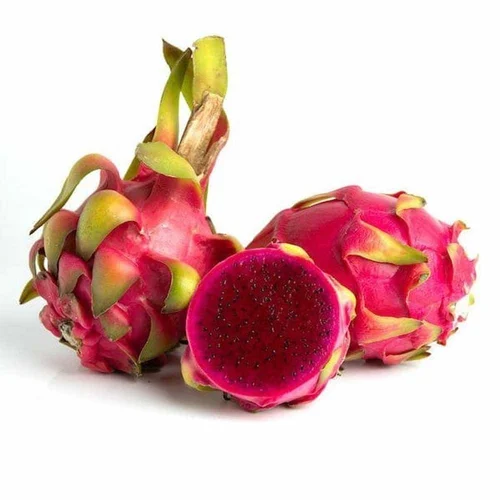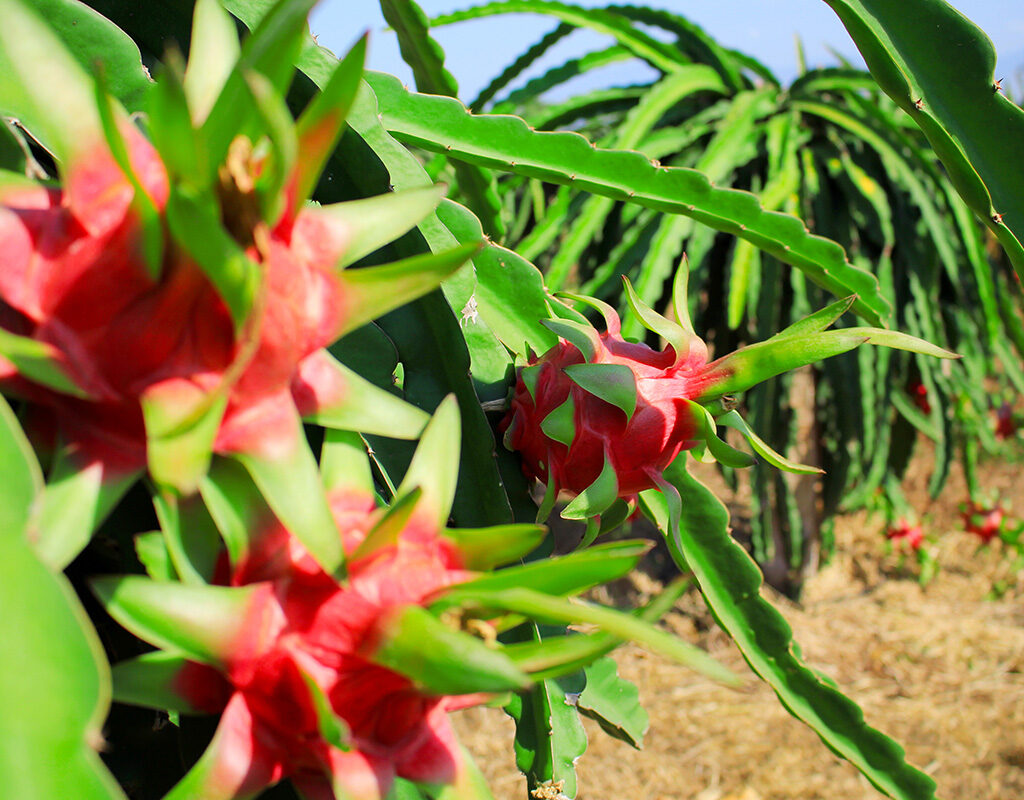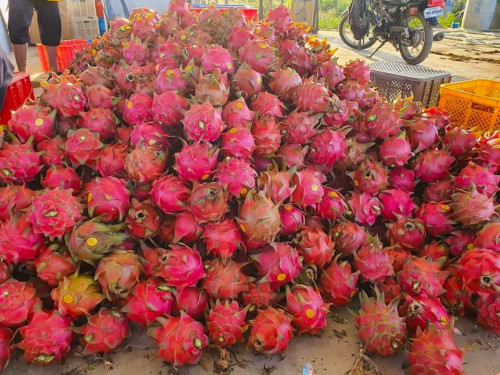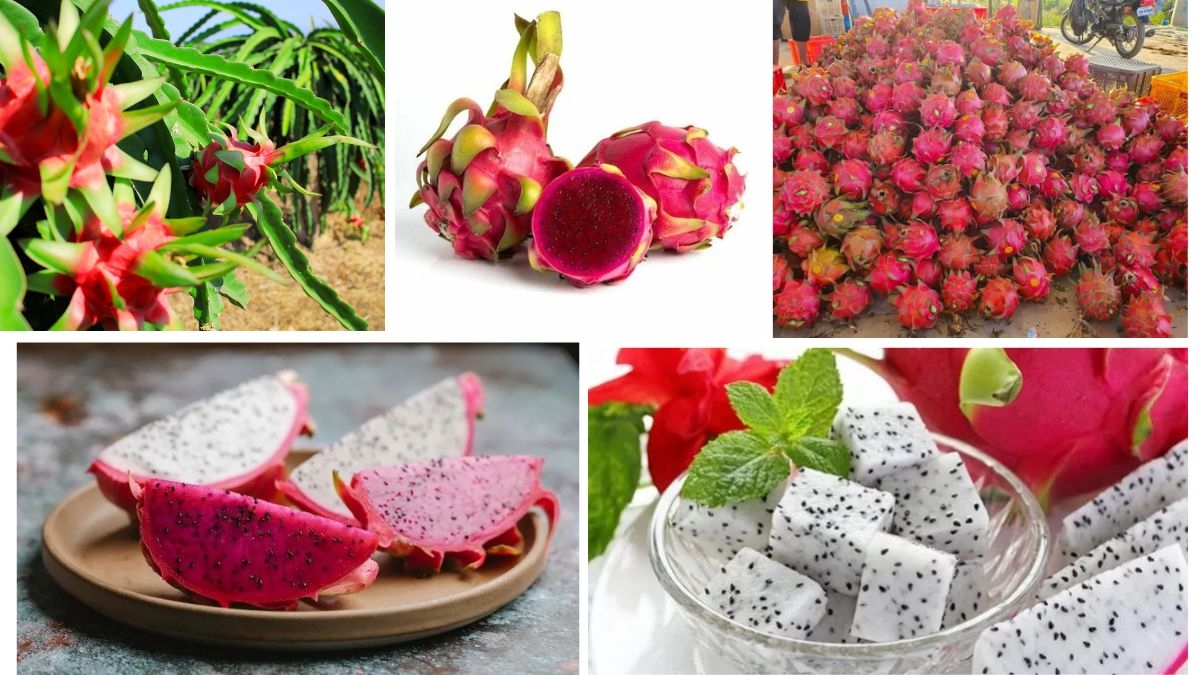Dragon fruit, with its striking appearance and impressive health benefits, has rapidly evolved from a niche tropical treat to a global superfruit. Also known as pitaya or pitahaya, this vibrant cactus fruit is rich in antioxidants, fiber, vitamin C, and essential minerals, making it highly sought-after in international markets. As global awareness of wellness and exotic fruits increases, so does the demand for dragon fruit.
While many countries cultivate dragon fruit, only a select few dominate the global export market, driving international trade and shaping economic trends in the fruit industry. In this article, we rank and explore the top dragon fruit exporting nations, examining their production strengths, export destinations, and unique advantages that place them at the forefront of the global dragon fruit trade.
1. Vietnam – The Undisputed Leader in Dragon Fruit Exports

Overview:
Vietnam is the world’s largest exporter of dragon fruit, accounting for over 80–90% of global exports. The country’s mastery in large-scale dragon fruit cultivation, combined with favorable climatic conditions and technological innovations, has positioned Vietnam as the top player in the industry.
Key Export Facts:
- Export Volume: Over 1 million metric tons annually
- Export Value: Approx. USD 1 billion
- Main Export Destinations: China (primary), Thailand, Indonesia, India, EU nations, United States, and the Middle East
- Main Production Areas: Binh Thuan, Long An, and Tien Giang provinces
Why Vietnam Leads:
- Efficient Supply Chain: Seamless farm-to-market logistics and cold storage infrastructure
- Technology: LED lighting systems for off-season flowering and improved yield
- Government Support: Incentives for export-oriented farmers and GI (Geographical Indication) protection
- Trade Relations: Strong bilateral agreements with China, ASEAN, EU, and other regions
Fun Fact: Vietnam’s red and white-fleshed varieties are known for superior sweetness and shelf-life, making them ideal for long-haul exports.
2. Thailand – Asia’s Quality-Focused Exporter

Overview:
Thailand is the second-largest dragon fruit exporter in Asia, known for producing high-quality organic and specialty dragon fruits. While its export volume is lower than Vietnam’s, Thailand compensates with a focus on premium markets and agri-tourism.
Key Export Facts:
- Annual Export Volume: Approx. 250,000–300,000 metric tons
- Top Destinations: Malaysia, Singapore, UAE, Qatar, China, and European nations
- Production Regions: Northern provinces like Chiang Mai and northeastern regions like Ubon Ratchathani
Thailand’s Strengths:
- Focus on Organic & Niche Varieties: Strong appeal in premium and health-conscious markets
- Farm-to-Tourism Link: Dragon fruit farms often double as eco-tourism destinations
- Innovation in Packaging: Attractive export-ready packaging for global supermarkets
3. China – A Unique Position as Exporter and Mega Importer
Overview:
Though China is the largest consumer and importer of dragon fruit, it also has a growing presence as a domestic producer and exporter. Chinese exports are still emerging but gaining traction in regional markets.
Key Export Facts:
- Export Volume: Estimated around 100,000–150,000 metric tons
- Primary Destinations: Hong Kong, Taiwan, Singapore, and South Korea
- Main Growing Areas: Guangxi, Guangdong, and Hainan
China’s Export Edge:
- Rapidly Increasing Production: Driven by huge domestic demand and modern greenhouse farming
- Efficient Agricultural Systems: Advanced logistics, smart farming, and large-scale investment
- Dual Role: Both a major exporter and the largest importer, particularly of Vietnamese fruit
4. India – Rising Star in the Export Landscape

Overview:
India is a relatively new entrant to the dragon fruit export scene but has shown remarkable growth in a short time. Supported by government initiatives, India aims to become a self-reliant and competitive exporter in the coming years.
Key Export Facts:
- Export Volume: Still under 50,000 metric tons, but growing rapidly
- Key Destinations: UAE, Bahrain, Oman, and Bangladesh
- Main Production Areas: Gujarat, Maharashtra, Karnataka, and Andhra Pradesh
Why India Is Gaining Ground:
- “Kamalam” Branding: The government has rebranded dragon fruit as Kamalam (meaning lotus in Sanskrit)
- Expansion Plans: Target of 50,000 hectares under cultivation by 2030
- Focus on Gulf Markets: Geographical proximity to the Middle East gives India a logistical advantage
5. Israel – High-Value Niche Exporter
Overview:
Israel is renowned for its high-tech agriculture, and dragon fruit is no exception. Though its export volume is relatively low, Israel supplies high-quality fruit to European markets at premium prices.
Key Export Facts:
- Annual Export Volume: Estimated around 10,000–20,000 metric tons
- Export Destinations: Germany, France, Italy, and the UK
- Production Regions: Negev Desert, Arava Valley
What Makes Israel Unique:
- Desert Farming Innovation: Uses drip irrigation and climate-controlled systems to produce year-round
- Premium Markets: Emphasis on quality over quantity for niche organic markets
- Sustainable Practices: Focus on eco-friendly production techniques
6. Mexico – Traditional Roots, Modern Exporter

Overview:
Mexico, one of the birthplaces of dragon fruit (pitaya), has embraced commercial cultivation to cater to the North American and European markets.
Key Export Facts:
- Annual Export Volume: Approx. 10,000–15,000 metric tons
- Main Destinations: United States, Canada, Spain
- Production Regions: Jalisco, Oaxaca, and Yucatán
Export Advantages:
- Proximity to the U.S. Market: Fast delivery times and low transport costs
- Cultural Familiarity: Pitaya has long been part of Mexican cuisine and heritage
- Organic Appeal: Mexican producers are increasingly targeting organic certifications
7. United States – Modest Producer, Growing Re-exporter
Overview:
The U.S. grows some dragon fruit in California, Florida, and Hawaii, but it’s also a significant re-exporter, importing fruit from Vietnam and Mexico and distributing it across global markets.
Key Trade Facts:
- Export Volume (including re-exports): Approx. 5,000–10,000 metric tons
- Main Destinations: Canada, Japan, and Europe
- Re-export Hubs: Los Angeles, Miami
Role in Global Trade:
- Major Importer: Buys massive volumes for domestic consumption
- Trade Infrastructure: Efficient ports, cold chain storage, and global logistics connections
Global Export Market Trends

Market Size:
- The global dragon fruit market is valued at over USD 1.5 billion as of 2024 and is expected to grow steadily at a CAGR of 6–8%.
Key Drivers:
- Health & wellness trends
- Demand for exotic fruits in supermarkets
- Smoothie bars, vegan diets, and cosmetic applications
- Growth in organic farming and sustainable packaging
Challenges:
- Perishability and shelf life
- Seasonal yield fluctuations
- Trade restrictions or phytosanitary issues
Ranked List of Top Dragon Fruit Exporting Nations (2024)
| Rank | Country | Estimated Export Volume (Metric Tons) | Major Markets |
|---|---|---|---|
| 1 | Vietnam | 1,000,000+ | China, EU, US, Middle East |
| 2 | Thailand | 250,000–300,000 | Malaysia, Singapore, EU |
| 3 | China | 100,000–150,000 | Taiwan, South Korea, HK |
| 4 | India | 40,000–50,000 (rising) | Gulf nations, Bangladesh |
| 5 | Israel | 10,000–20,000 | Europe |
| 6 | Mexico | 10,000–15,000 | US, Canada |
| 7 | United States | 5,000–10,000 (including re-exports) | Canada, Japan, EU |
Conclusion
The global dragon fruit export landscape is clearly led by Vietnam, whose dominance in both quantity and quality is unmatched. Thailand and China follow with significant contributions, while India, Israel, and Mexico are emerging players offering unique regional advantages. As demand continues to rise, driven by health trends and exotic appeal, these countries are poised to shape the future of the dragon fruit trade.
For investors, policymakers, and agricultural entrepreneurs, understanding these global dynamics is crucial. Whether through expanding production, improving export quality, or targeting niche markets, the dragon fruit industry offers rich opportunities for growth and innovation.







Leave A Comment